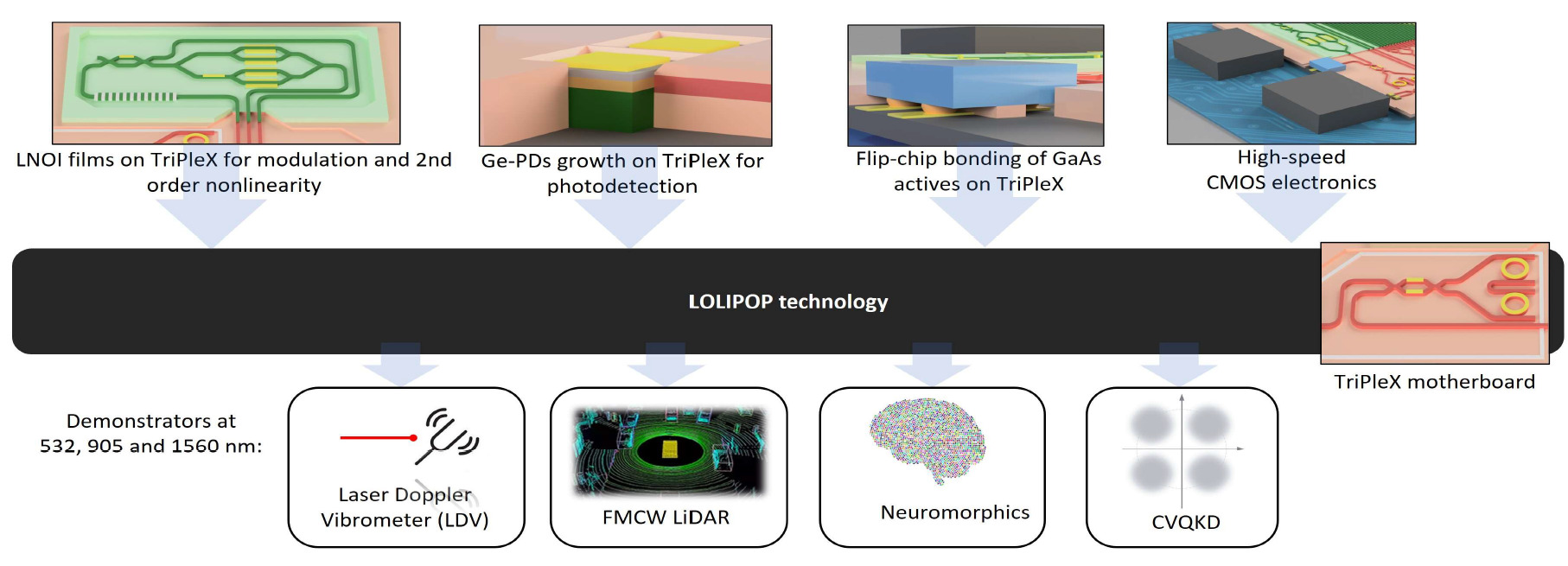LioniX Joins Two More R&D Projects In Horizon Europe: SPRINTER & LOLIPOP
Our stellar research project record continues to grow!
LioniX International has participated in many research and development projects in collaboration with numerous universities, research institutes, and enterprises. As of today, we have added two more to our list: SPRINTER and LOLIPOP. Both projects are coordinated by the excellent Institute of Communication and Computer Systems in Athens and feature the photonic packaging capabilities of our partner company PHIX. With the consortia that have assembled for these projects, we are in great company for any research effort!
SPRINTER: Wireless, High-Speed, High-Volume Industrial Networks
SPRINTER stands for low-coSt and energy-efficient hybrid Photonic integrated circuits for fibeR-optic, free-space optIcal and mmWave commuNication systems supporting Time critical networking in industrial EnviRonments, which is a project title as impressive as its aim. The goal of the project is to develop hardware for optical network infrastructure that would support factory machines. One of the bottlenecks of industrial networks is the slow transfer of information between its sensors, processors, and motors. Industrial machines often cannot rely on cables and fibers for data transmission, as they require high mobility and spatial freedom to operate smoothly. In the case of industrial robots, complete freedom to move around factory floors is required. Optical networks have the potential to address these problems by creating entirely wireless high-speed and high-capacity networks. Using integrated photonics, we can finally harness the potential of high frequency radio waves and free-flying lasers for such applications.
Our involvement is based on two technologies with which we have prior experience: tunable external cavity lasers and optical beamforming networks. Our tunable lasers will enable 10 Gb/s data rates in optical transceivers using our ultra-fast stress-optic actuators. They will feature tunability in the S-band (1460-1530 nm) and C-band (1530-1565 nm), ultra-high output power (100mW), ultra-narrow linewidth (<300 hz). we will further develop our piezoelectric actuators, with the aim for achieving very high tuning speeds (>10 MHz) and very low power consumption (<10 μw). meanwhile, we will use our low-loss TriPleX® platform and experience with beamforming networks from earlier projects to design and fabricate an optical beamforming unit. This chip will be part of the transmitter in a hybrid-integrated modem connecting a fixed fiber-optic network to remote devices within a 500 m range at 10 Gb/s. The receiver of this device will also feature our external cavity lasers, hybrid-integrated to other platforms.
LOLIPOP: New Materials Join Our TriPleX® Platform
Overview of Project LOLIPOP. Lithium niobate, germanium photodiodes, gallium arsenide, and CMOS electronics are to be integrated with our TriPleX® platform. The results of this integration will be demonstrated by developing new prototypes in various applications.
Lithium niObate empowered siLIcon nitride Platform for fragmentation-free OPeration in the visible and the NIR (LOLIPOP) will be focused on equipping our TriPleX® technology with new hybrid components functionalities. The materials which will be explored to that end are lithium niobate (LiNbO3), an excellent material for light modulation, germanium (Ge), which is known for its light detection capabilities, and gallium arsenide (GaAs), a well-established light source. To combine LiNbO3 and TriPleX®, various hybrid integration methods, such as flip-chipping and micro-transfer printing, will be explored and tested. For Ge photodiodes in TriPleX®, heterogeneous integration will be developed with the aim of achieving high detection efficiency in a broad waveband (400-1600 nm). GaAs gain sections will also be flip-chipped onto TriPleX® to create all-new external cavity lasers with <10 kHz linewidths. These new chips will be equipped with bespoke CMOS electronics to drive and control them, targeting low power consumption and large bandwidths.
Naturally, LioniX International will be playing a central role in LOLIPOP. We are responsible for the design, fabrication, and processing of the TriPleX® chips, which will serve as the host platform for the other materials. We will also play an active role in the design of the integration steps of the various materials to realise the aforementioned components.
The results of these efforts will be demonstrated with the assembly and testing of various modules. Laser doppler vibrometers, photonic neural networks, and optical squeezing sources are slated for prototyping once the underlying technologies are developed. Such demonstrators would attest to the maturity of these new technologies and pave the way for further deployment in other applications. Metrology, artificial intelligence, biosensing, and quantum computing are some of the clear application routes that we envision. With a little luck and a lot of time, you may even be able to order these components as building blocks in future MPWs!




